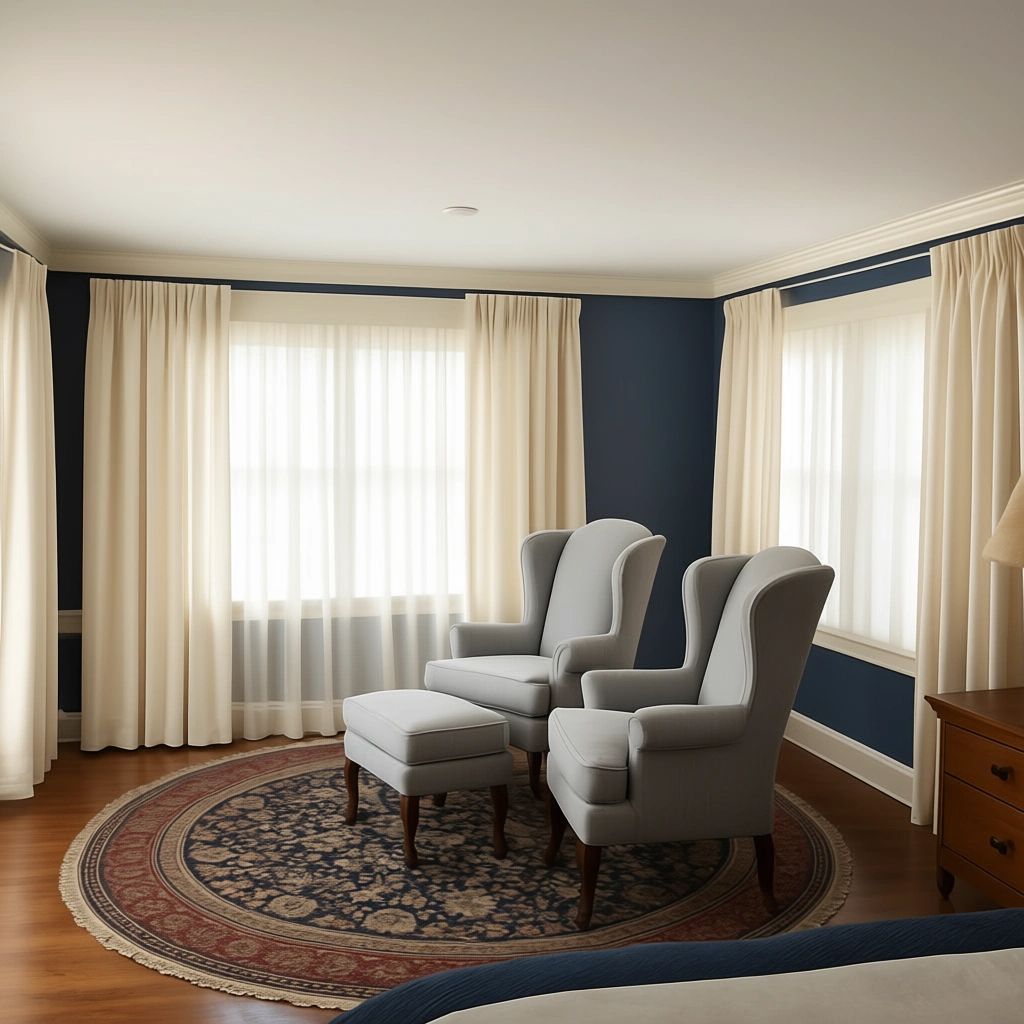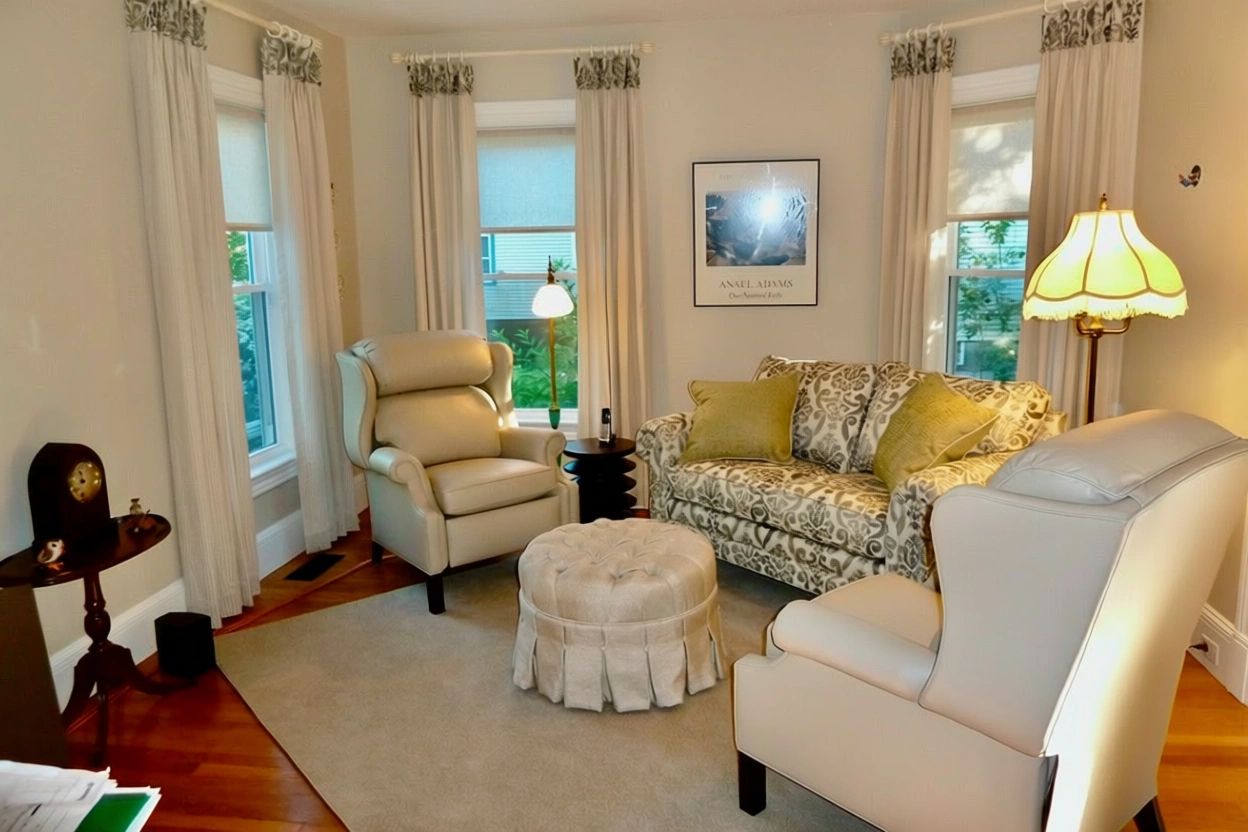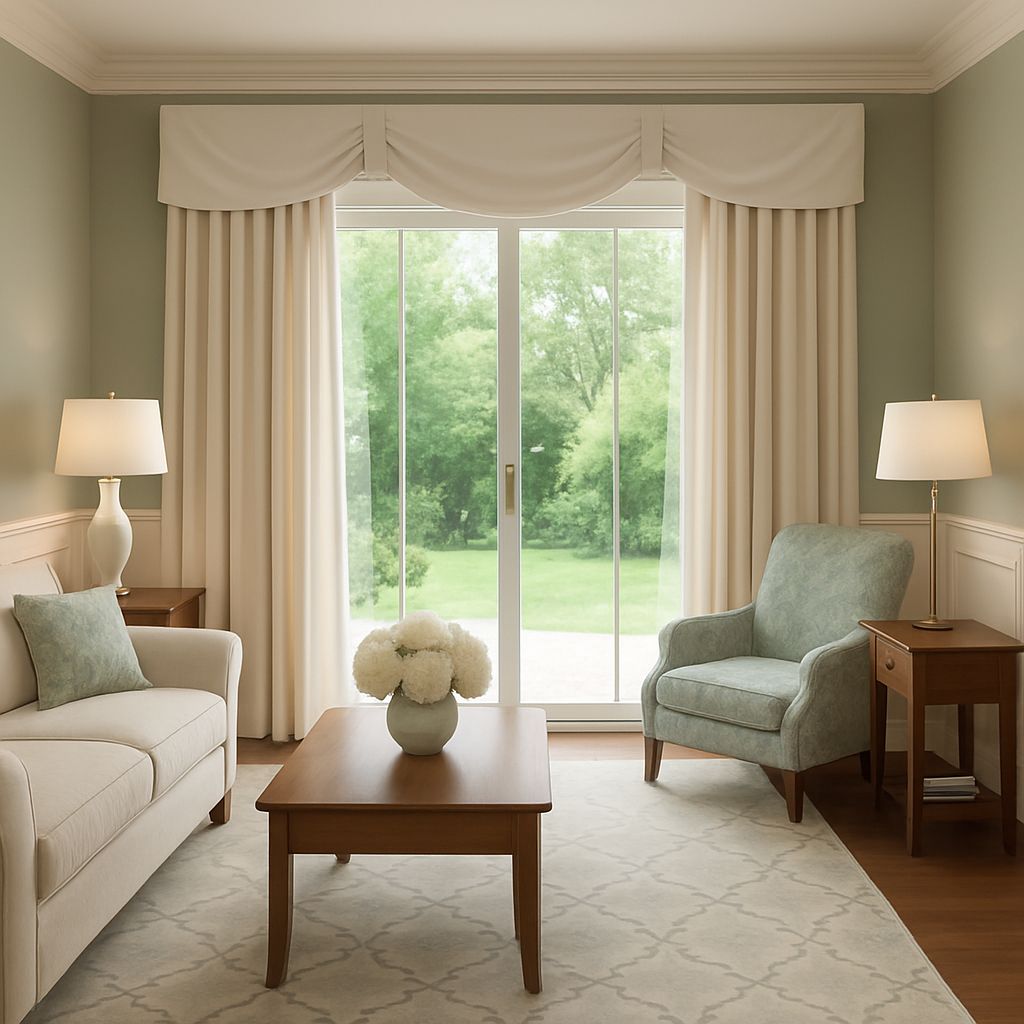How Wide Should Drapery Panels Be for Perfect Coverage?
TLDR;
Drapery panels should typically be two to three times the width of your window to ensure perfect coverage and a full, polished look. The exact width depends on fabric type, style, and whether you want functional or decorative coverage. For most standard setups, doubling your window width gives you the right panel width, but lighter fabrics and layered drapery often need more.
Why Drapery Panel Width Matters

The width of your drapery panels determines how well your window is covered, how the fabric falls, and whether the overall look feels skimpy or balanced. Too narrow, and the panels will not close properly or look stretched. Too wide, and the drapery can overwhelm your space and waste fabric. At Simply Windows, we advise clients to start with function, then style. Your drapery panels must close comfortably while maintaining enough fullness to look elegant, not flat.
Drapery Panel Width Guidelines
Drapery panel width is not a guess. It follows certain guidelines based on measurement, fullness, and header style. The right panel width ensures:
- Complete coverage without gaps
- Balanced fullness when panels are open or closed
- A style that matches the fabric weight and room design
A common rule of thumb is multiplying your total window width by 2. This means if your window is 60 inches wide, you want at least 120 inches of total fabric. Divide this by the number of panels, often two, to find the width of each panel.
What is Fullness in Drapery?

Fullness refers to how much extra fabric is added to the width of your drapery to create pleats, gathers, or folds. Without fullness, panels look flat and unfinished.
- Standard fullness ratio: 2× window width
- Lush or dramatic fullness ratio: 2.5× to 3× window width
- Minimal fullness (rare, for decorative only): 1.5× window width
Fabric type affects fullness. Heavy velvet panels need less fullness to appear rich. Sheer fabrics require more fabric to look soft and gathered.
Stack Back and Overlap in Drapery Panels
Two concepts often overlooked are stack back and overlap.
- Stack back is how much fabric sits off to the side when panels are open. If ignored, drapery can block natural light.
- Overlap is how panels meet in the center to prevent light gaps. Without overlap, you risk a visible split down the middle.
Both factors impact how wide your panels should be. Always add extra fabric for overlap and account for stack back when measuring rod length.
Measuring Window Width and Rod Extension
Accurate measurement is the foundation of correct drapery panel width.
Steps:
- Measure the width of the window frame from edge to edge.
- Add trim or molding if you want full coverage beyond the glass.
- Extend the rod 4 to 8 inches on each side for stack back.
- Total width = window width + rod extension.
Once you have this number, apply your chosen fullness ratio.
Drapery Fullness Ratios and Multipliers
Choosing the right ratio changes the look entirely.
- 1.5× fullness: Tailored, minimal, often used for functional blackout panels.
- 2× fullness: Standard and most common, balances look and function.
- 2.5× to 3× fullness: Luxurious, best for sheer or lightweight fabrics.
Example: For a 72-inch window, 2× fullness = 144 inches total fabric. If using two panels, each panel should measure about 72 inches.
Standard Drapery Panel Widths
Ready-made drapery panels often come in widths such as 48, 54, 60, or 72 inches. While these work for average windows, they may not fit every situation.
- Narrow windows can work with one panel on each side.
- Wider windows often need custom panels to avoid a skimpy look.
- Decorative panels that never close may use narrower widths, since coverage is not required.
Custom panels from Simply Windows allow precise width tailored to your measurements and fabric choice.
Step-by-Step Drapery Width Calculation
- Measure total window and rod extension width.
- Multiply by chosen fullness ratio.
- Add overlap if panels must meet in the center.
- Divide total by number of panels.
- Adjust for pleats or header style.
This method ensures no surprises when your drapery is installed.
Pleated, Grommet, and Rod Pocket Styles
Different header styles affect panel width.
- Pleated panels: Require more fabric but finish with structured folds.
- Grommet panels: Need less fullness, usually 1.5× to 2×.
- Rod pocket panels: Need more fabric to slide easily, usually 2× to 3×.
Each header style gathers fabric differently, so calculate accordingly.
Drapery Panel Width for Special Cases
Some windows need special consideration.
- Wide or floor-to-ceiling windows: Always go custom, since ready-made panels rarely cover them fully.
- Sliding doors: Panels must stack clear of the doorway, requiring extra rod extension.
- Bay windows: Multiple rods mean multiple panels, so calculate each section separately.
- Layered treatments: Sheers plus blackout panels require two sets of calculations, one for each layer.
Drapery Panel Width for Blackout Curtains
Blackout curtains require exact width for proper light control.
- Panels must overlap in the center to prevent light leaks.
- Fullness should be at least 2× window width to avoid stretched fabric.
- For bedrooms and media rooms, consider 2.5× fullness for better coverage.
Drapery Panel Width for a 60-Inch Window

This is a common example clients ask about at Simply Windows.
- Window width: 60 inches
- Fullness ratio: 2× = 120 inches total fabric
- Number of panels: 2
- Width per panel: 60 inches
If you use a lighter fabric like sheers, increase to 2.5× or 3× for the same window, which equals 150 to 180 inches total fabric.
Design and Aesthetic Considerations
Beyond coverage, panel width changes the feel of a room.
- More fullness = softer, richer, more traditional look.
- Less fullness = tailored, contemporary look.
- Wider rods with stack back expose more glass and light.
- Extra-wide panels can visually expand a small window.
Common Mistakes to Avoid
- Buying panels too narrow for the window width.
- Ignoring stack back, which reduces light.
- Forgetting overlap in the center.
- Using heavy fabrics with too much fullness, which look bulky.
- Not accounting for fabric shrinkage after cleaning.
Frequently Asked Questions
Can I use 1× fullness instead of 2×?
Only for decorative panels that never close. Functional panels need more fabric.
What if I already bought panels that are too narrow?
Layer with sheers or add stationary side panels to balance the look.
How much extra fabric for pattern alignment?
Plan at least an additional 10 to 20 percent fabric to align large patterns.
Does drapery header style change width needs?
Yes. Pleated styles use more fabric, while grommet styles require less.
Final Recommendations for Drapery Panel Width
- Start with accurate measurements of window and rod extension.
- Apply the right fullness ratio based on fabric weight and desired style.
- Always divide total fabric by the number of panels for balance.
- Add overlap in the center for light control.
- Consider stack back to ensure panels open without blocking light.
Perfect coverage comes from planning. At Simply Windows, we emphasize measurement, fullness, and style to achieve drapery that is both functional and beautiful. Whether you are outfitting a single window or a wall of glass, getting panel width right is the key to polished, professional-looking results.

